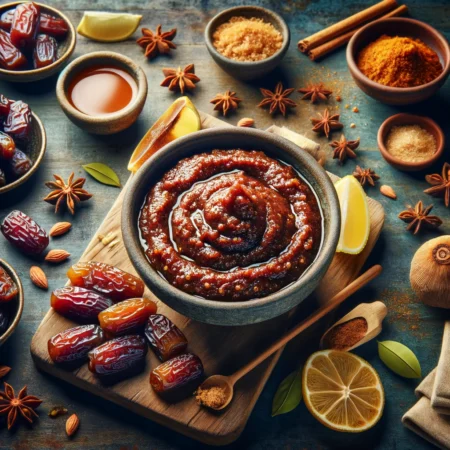In Sweden, a country renowned for its striking landscapes that stretch from the craggy shores of the Baltic Sea to the serene expanse of the Arctic Circle, culinary traditions are as deeply rooted as the ancient forests. Among these, a particular story of culinary innovation stands out, not for its epic battles or mythical creatures, but for the creation of a sauce that has since become a staple of Swedish cuisine: the Dillkött Sauce. This tale, rich with humor and the spirit of experimentation, unfolds in the kitchen of a spirited chef named Gustav.
Gustav was no ordinary chef; he was a culinary maverick, known throughout the land for his daring flavor combinations and his refusal to adhere to the strictures of traditional Swedish cooking. His kitchen was his laboratory, and it was within these walls that he decided to tackle what he saw as the ultimate challenge: reinventing the classic Swedish dill sauce to accompany the beloved dillkött, a dish of poached meat and dill.
The traditional dill sauce, while a favorite across Sweden, was, in Gustav’s opinion, ripe for innovation. “Why settle for comfort,” he would often muse, “when one can strive for culinary ecstasy?” And so, armed with nothing but his wits and a bushel of fresh dill, Gustav set out to create a dill sauce that would forever change the Swedish culinary landscape.
His first attempts were met with mixed reactions. A sauce too tart had his diners puckering more than appreciating. A version too sweet reminded one elderly patron of a dill-flavored dessert rather than a complement to savory meat. But Gustav was undeterred. With each iteration, he added a pinch of this and a dash of that, meticulously recording his experiments in a ledger that grew as thick as a medieval tome.
The breakthrough came on a midsummer’s eve, as the midnight sun bathed the land in a surreal light. In a moment of inspiration, Gustav added a splash of Swedish aquavit to the sauce. The aquavit, with its subtle spice and herbaceous undertones, was the missing link, transforming the sauce into a concoction that was at once familiar and entirely new.
The revised Dillkött Sauce was an immediate sensation. Its rich and complex flavor, with just the right hint of aquavit, elevated the humble dillkött to new culinary heights. Word of Gustav’s creation spread like wildfire, from the snow-capped mountains of the North to the bustling streets of Stockholm.
But fame, Gustav soon discovered, was a double-edged sword. Chefs from across the country flocked to his kitchen, eager to learn the secret of his sauce. Gustav, ever the culinary rebel, refused to divulge the exact proportions of his ingredients, insisting that the true essence of cooking lay in intuition and creativity, not in slavish adherence to recipes.
And so, the tale of Gustav and his Dillkött Sauce became a legend, a humorous reminder of the joys and pitfalls of culinary innovation. It served as a testament to the idea that the path to greatness is often paved with failed experiments and that true innovation requires not just skill, but a dash of daring.
The moral of Gustav’s story, whispered in kitchens across Sweden, is simple: In the quest for culinary perfection, one must be willing to embrace the unpredictable, to find harmony in the unexpected, and to remember that sometimes, the most revolutionary creations come from the most unassuming beginnings.
Swedish Dillkött Sauce
Ingredients
1/2 cup beef or vegetable broth
1/4 cup cream
2 tablespoons chopped fresh dill
1 tablespoon white wine vinegar
1 teaspoon sugar
Salt and white pepper to taste





